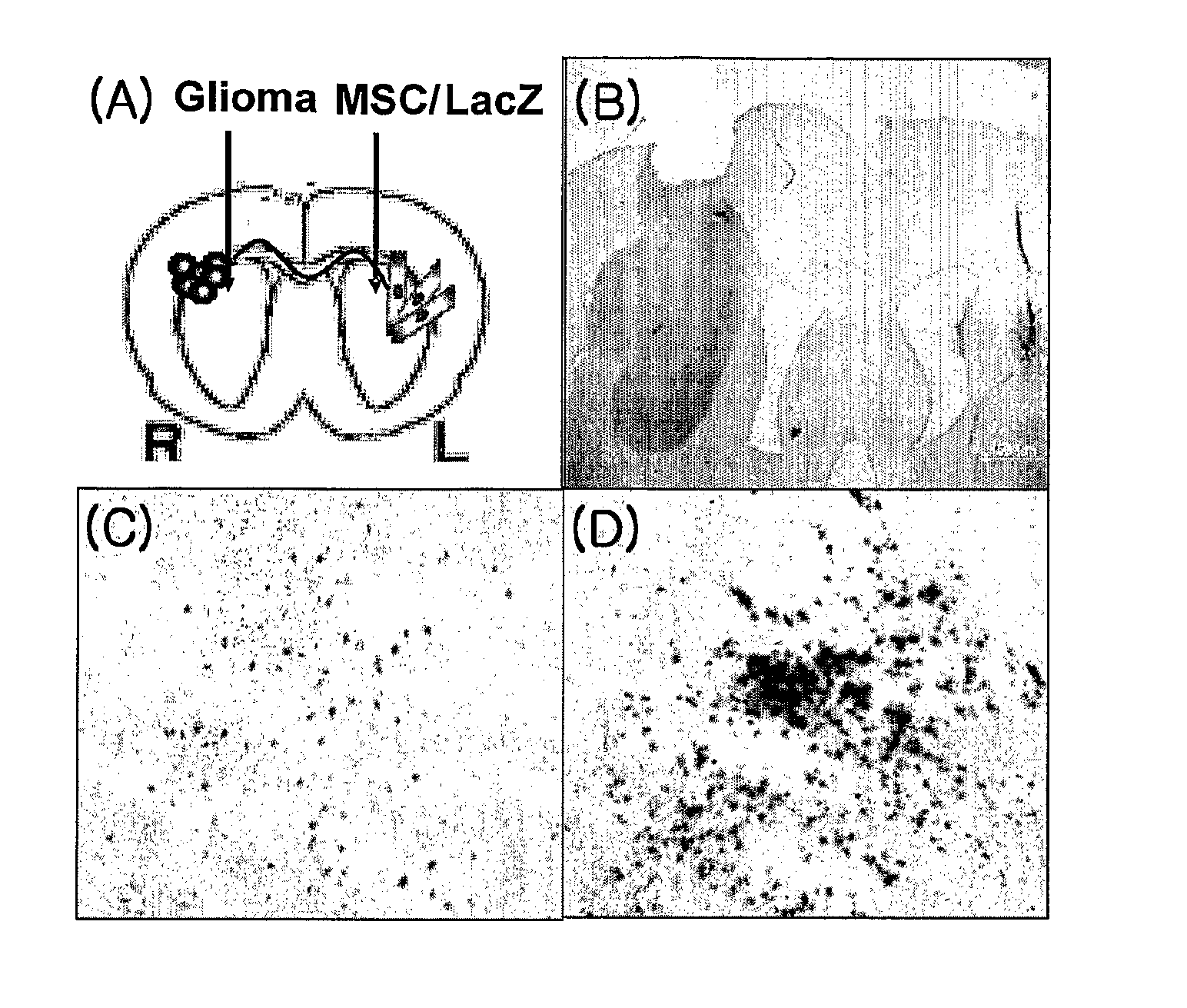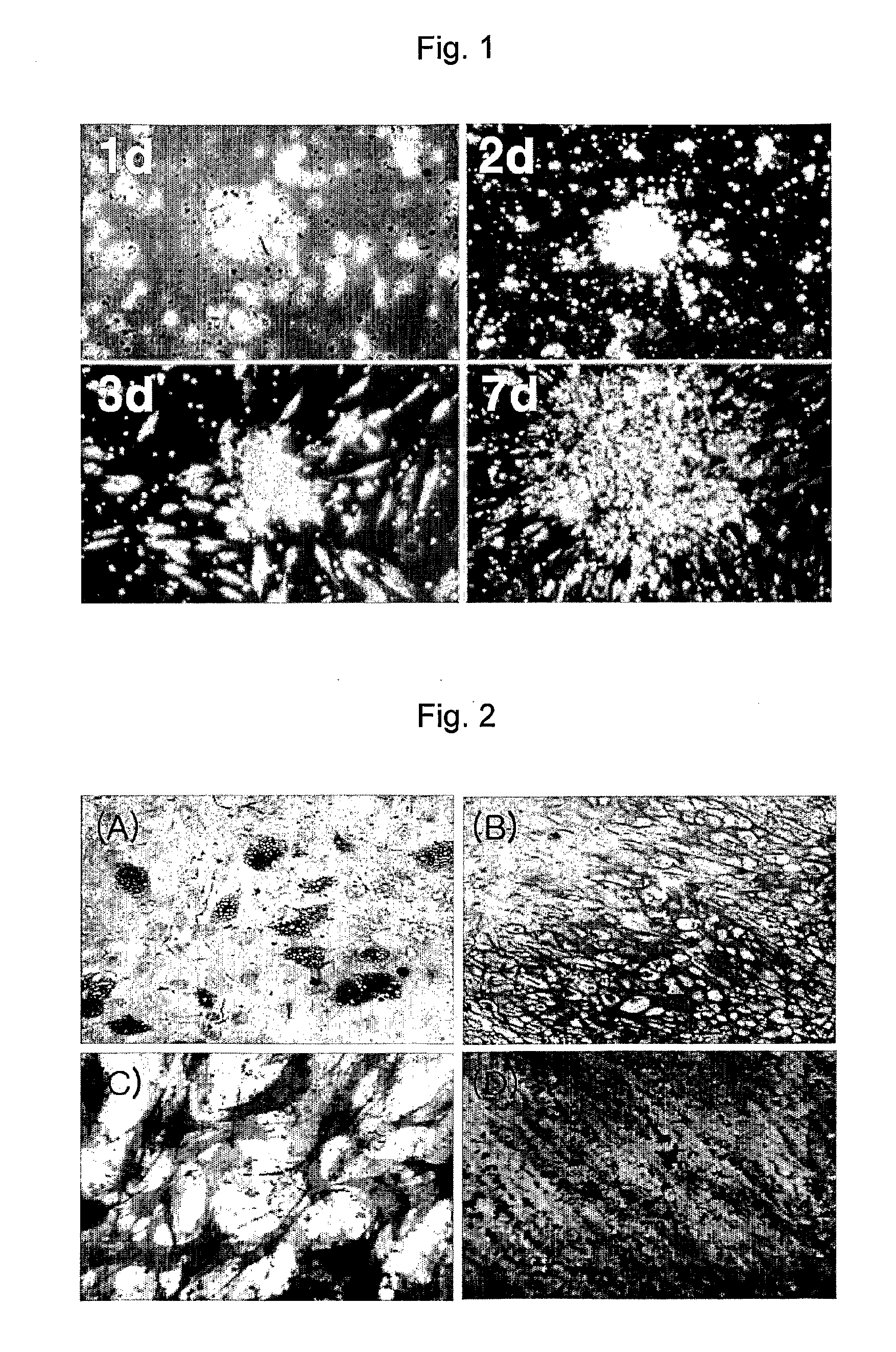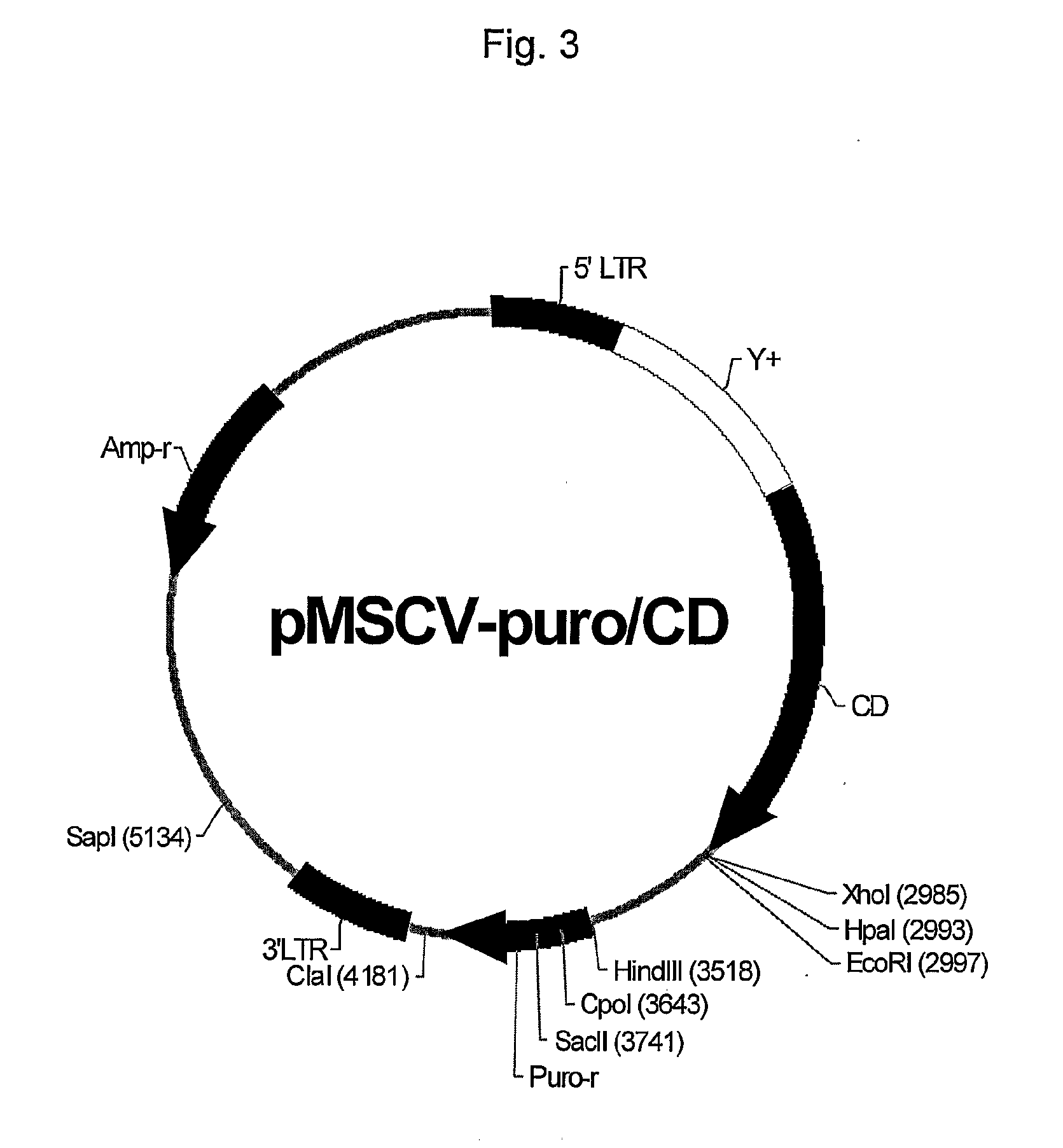Use Of Mesenchymal Stem Cells Genetically Modified To Express A Suicide Gene For Treating A Cancer
a mesenchymal stem cell and suicide gene technology, applied in the field of cancer drugs, can solve the problems of ineffective chemotherapy with anti-cancer medicines, inability to safely perform conventional excision of brain tumors, and inability to carry out chemotherapy safely, so as to reduce the viability of 293t/cd, reduce the activity of c6/lacz cells, and improve the survival of c6/lacz cells
- Summary
- Abstract
- Description
- Claims
- Application Information
AI Technical Summary
Benefits of technology
Problems solved by technology
Method used
Image
Examples
example 1
Isolation and Culture of Human Mesenchymal Stem Cells (hMSCs)
(Step 1) Extraction of Bone Marrow and Isolation of Mesenchymal Stem Cells
[0049]4 ml of HISTOPAQUE 1077 (Sigma, U.S.A.) and 4 nm of bone marrow obtained from Bone marrow bank (Korean Marrow Donor Program, KMDP) were added to a sterilized 15 ml test-tube. After centrifugation at 400×g for 30 minutes, 0.5 ml of the buffy coat in the interphase was collected and transferred into a test-tube containing 10 ml of sterilized phosphate buffered saline. The resulting suspension was centrifuged at 250×g for 10 minutes to remove the supernatant and 10 ml of phosphate buffer was added thereto to obtain a suspension, which was centrifuged at 250×g for 10 minutes. The above procedure was repeated twice and DMEM medium (Gibco, U.S.A.) containing 10% FBS (Gibco) was added to the resulting precipitate. A portion of the resulting solution corresponding to 1×107 cells was placed in a 100 mm dish and incubated at 37° C. for 4 hours while supp...
example 2
Construction of a Retroviral Vector Expressing Cytosine Deaminase
(Step 1) Cloning of Cytosine Deaminase
[0058]Cytosine deaminase (CD) gene was cloned by PCR reaction using genomic DNA of E. coli K12 MG1655 (ATCC 700926, Korea Research Institute of Bioscience and Biotechnology) as a template. PCR was carried out using oligonucleotides CD-F (5′-GAA TTC AGG CTA GCA ATG TCT CGA ATA ACG CTT TAC AAA C-3′: SEQ ID NO: 1) and CD-R (5′-GGA TTC TCT AGC TGG CAG ACA GCC GC-3′; SEQ ID NO: 2) under the condition of 5 minutes at 94° C.; 27 cycles of 30 seconds at 94° C., 40 seconds at 60° C. and 1 minute at 72° C.; 7 minutes at 72° C. The PCR product was cloned using pGEM-T Easy vector cloning kit (Promega) and vector pGEM-T-CD containing the CD gene was isolated by blue-white colony selection using X-gal and IPTG. Through sequence analysis of vector pGEM-T-CD using oligonucleotides of SEQ ID NO: 3 (5′-CAT ACG ATT TAG GTG ACA CTA TAG-3′) and SEQ ID NO: 4 (5′-ACC GGG AAA CAC CTA TTG TG-3′), the CD ge...
example 3
Verification of CD Expression in 293 T Cell
(Step 1) Quantification of Cytosine Deaminase Activity
[0061]pMSCV-puro / CD was transfected into 293T cell (ATCC CRL-11268) according to the calcium phosphate-coprecipitation method. After 48 h of transfection, the cells were split into 1:10 in the selection medium containing puromycin (4 μg / ml, Sigma, U.S.A.) for 2 weeks. The grown cells were harvested in phosphate buffered saline and lysed by repeating 5 times of freezing in dry-ice in ethanol for 2 minutes and thawing at 37° C. for 5 minutes. A supernatant was obtained by centrifuging the cell lysate at 12,000 rpm for 5 minutes at 4° C., and protein concentration was quantified by Bradford method (Anal Biochem, 72: 248-254, 1976). Ten μg proteins in 10 μwere mixed with 5 μl of 3 mM [6-3H]cytosine (0.14 mCi / mmol, Moravek, USA) and incubated at 37° C. for 1 h. The reaction was terminated by adding 345 μL of 1 M acetic acid. The mixture was eluted with a SCX Bond elute column (Varian, U.S.A) ...
PUM
 Login to View More
Login to View More Abstract
Description
Claims
Application Information
 Login to View More
Login to View More - R&D
- Intellectual Property
- Life Sciences
- Materials
- Tech Scout
- Unparalleled Data Quality
- Higher Quality Content
- 60% Fewer Hallucinations
Browse by: Latest US Patents, China's latest patents, Technical Efficacy Thesaurus, Application Domain, Technology Topic, Popular Technical Reports.
© 2025 PatSnap. All rights reserved.Legal|Privacy policy|Modern Slavery Act Transparency Statement|Sitemap|About US| Contact US: help@patsnap.com



